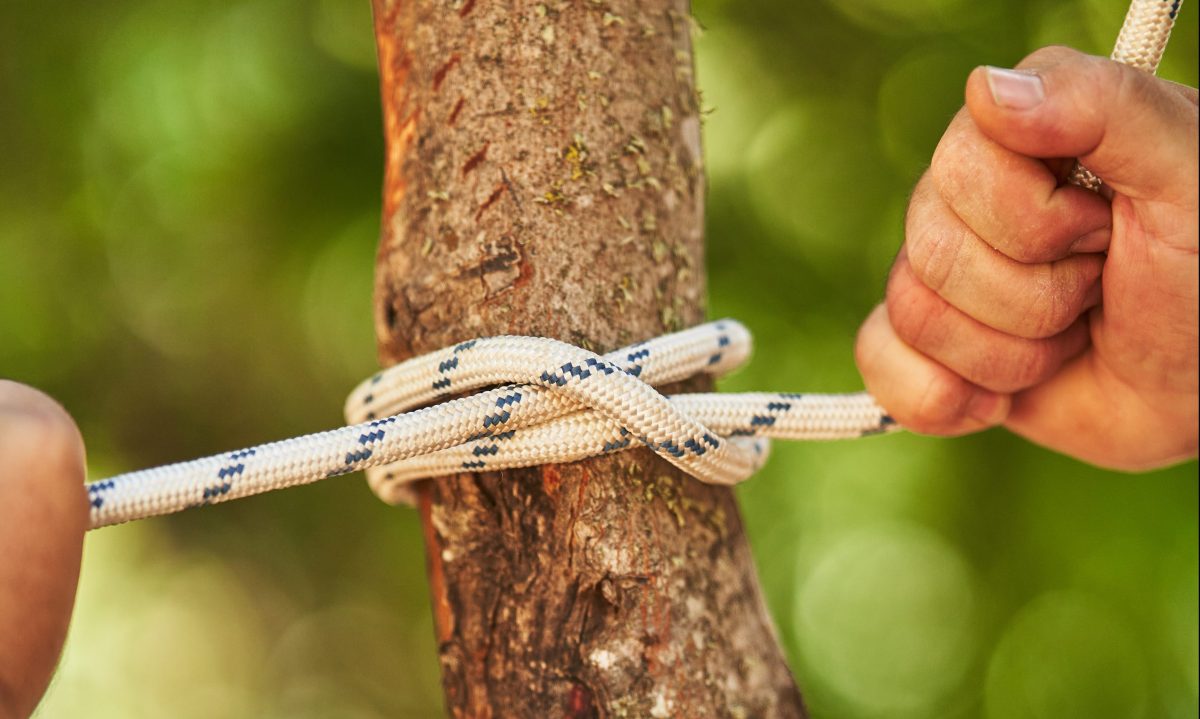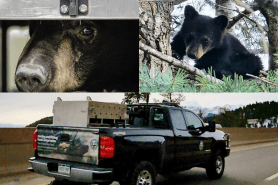

Bear Grylls is a survivalist, adventurer, and author. He is also the youngest ever Chief Scout in the United Kingdom, claiming the title when he was appointed to the position in 2009 at age 34. In 2018, Grylls added the title of being the first ever Chief Ambassador of World Scouting, making him responsible for helping to promote the value of being a Scout to a global audience.
Videos by Outdoors
Knots — and knot tying — are a not only a crucial part to Scouting but to the outdoors lifestyle in general. There are select knots that a scout must learn to ascend the ranks. Moreover, there are knots that Grylls details as being crucial to survival. In his book How to Stay Alive: The Ultimate Survival Guide for Any Situation, he gives details on three must-know-knots.
Overhand Knot/Stopper Knot
This is the easiest knot to know and to tie. It is, basically, what everyone learns as their first knot. There are valid reasons for that: it is easy and very useful.
The key benefits are that if you use this knot to tie rope around something, it can be undone easily. It is called ‘stopper knot’ because it is useful for stopping the end of a rope from slipping through a hold.
This simple diagram can be followed to tie the basic knot.

Bowline Knot
The bowline is a favorite of Grylls — and Scouts, and rescue workers — because it can be used in many situation, including life-saving efforts.
In Scouting, participants are taught to use a bowline for many reasons, though these three are often the most cited:
- To tie a secure line around yourself, trees, posts, or other objects.
- To secure the top of a dining fly.
- To create a grip to pull or rescue someone.
The bowline is made by creating a loop at the end of a rope which won’t slip or tighten. In dangerous situations this knot is easy to tie around someone’s waist to help get them to safety.
It looks like this in three simple steps:

For situations that may require you to be your own source of survival this knot can be tied with one hand. It would an especially practical knot to know if you are climbing and on a cliff!
Take a look at how that would be done.

Clove Hitch
A clove hitch is also an easy knot to tie and is best used to secure a line around a cylindrical object. It can be used to attach a rope to a pole or a carabiner.
The knot can be formed in a few different ways and is one of the most commonly used by Scouts.
One way is to form two loops — one left over right, one right over left — and then placing the second loop over the first and tightening.
There are two warnings with this in survival situations: a clove hitch may slip if used on a smooth surface so be careful to make sure it’s pulled tight. It is also not tremendously useful in certain situations because it will likely slip if put under heavy tension. Be mindful of when you are using the clove hitch.

Mathematician Benjamin Burton was fascinated by solving the question as to how many possible knot combinations that there are.
“There is something tantalizing about problems that you can describe to a 10-year-old, but that mathematicians have not yet solved,” he told NewScientist.com.
He also wrote an algorithm to try and figure it. The final tally came out to be 352,152,252!
Grylls may — or may not — know all 352 million. . . though he has a few videos to help teach you the basic ones.










What is the best knot tying book to learn simple knots?
good